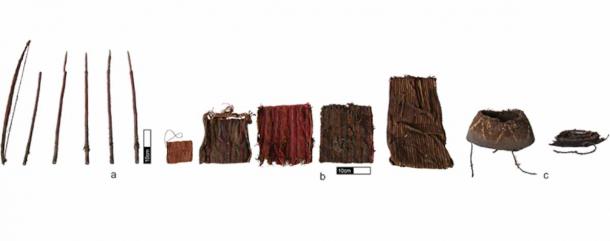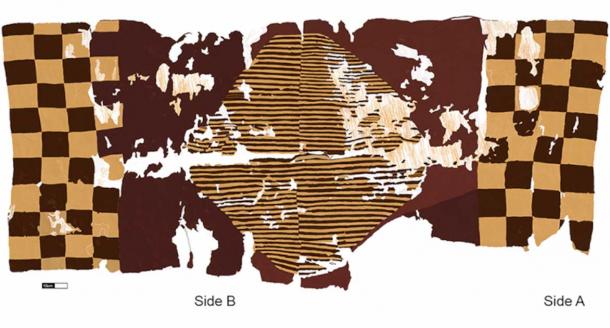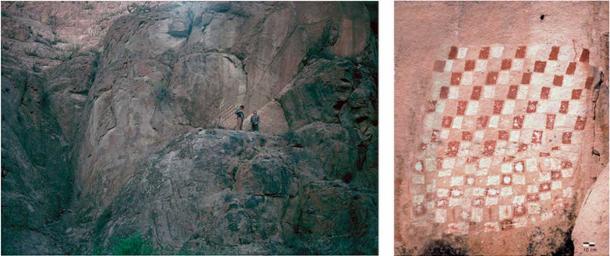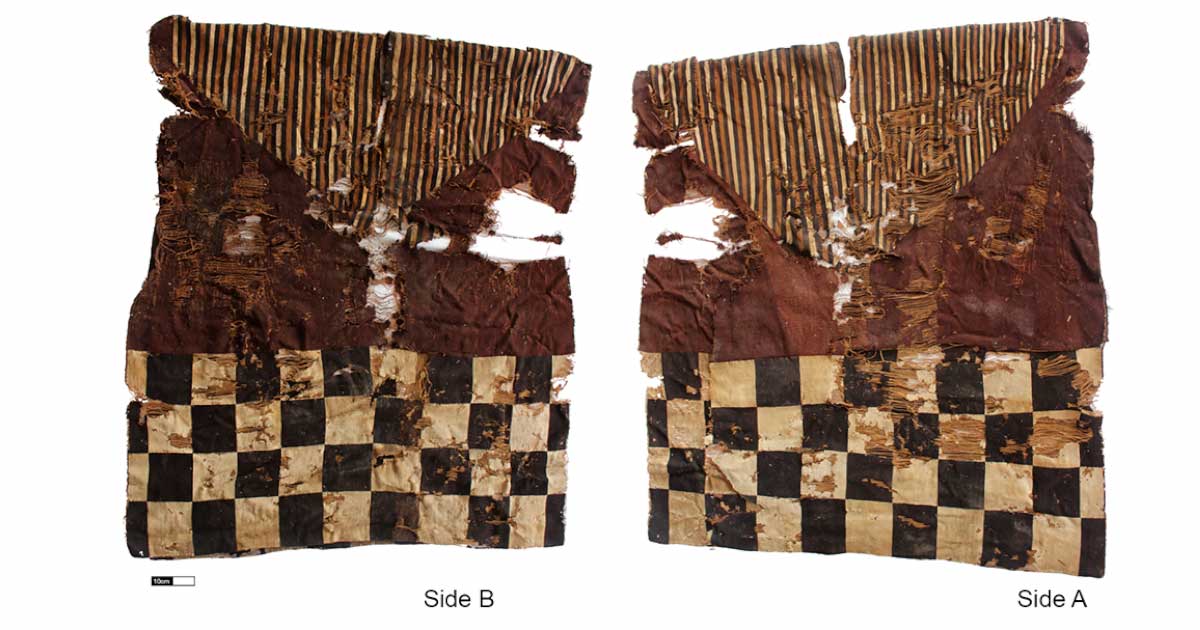Chilean Inka Tunic Provides Insight into Inka Power & Cultural Fusion
A brilliant new study on unkus, a type of standardized Inka tunic, has shed light on a rather important matter of socio-political organization – that of centralization of power. Based on the unku uncovered in northern Chile, the team explored the cultural and control mechanisms of the Inka (Inca) Empire.
The well-preserved Inka tunic was discovered in a burial site at a 15th-century Chilean cemetery located in Caleta Vítor Bay. The study closely analyzed this article of clothing, which is believed to have been worn by a highly esteemed member of the Inka elite during that time period.

Artifacts found alongside the Inka tunic at the excavated tomb no. 1 at Caleta Victor Bay, including bow and arrows, chuspas and talega and hats. (Correa-Lau, J., et. al. / CC BY 4.0)
Inka Tunic Reveals Provincial Absorption into the Larger Inka Empire
Unkus were a standardized attire that met technical and stylistic specifications imposed by imperial authorities. However, the Inka tunic discovered in Chile, dubbed the Caleta Vítor unku, goes beyond these strict mandates. The study highlights that artisans who created it incorporated subtle cultural tributes unique to their provincial homeland.
“It represents a study of a rare example of an excavated Inka unku tunic, whose context and technical features are providing an unprecedented understanding of imperial Inka influence in the provinces,” explained Jeffrey Splitstoser, an assistant research professor of anthropology and a co-author of the study, in a press release by George Washington University.
- Dressed to Kill: The Vibrant Textiles Adorning these Incan Mummies Have a Lethal Secret
- Researchers Say New Find of Khipu Strings May Help Unravel the Inca Record-keeping System
Interestingly, the weaver of the Caleta Vítor unku lived in an area that was hundreds of miles south of the Inka capital of Cusco. This region was absorbed into the Inka empire in the late 15th century, and the weaver employed the techniques, style and imagery of an indigenous culture that existed long before the Inka conquest.
As a result, the Inka tunic serves as a tangible symbol of provincial life in pre-colonial South America. The study reveals that the Caleta Vítor unku provides an unprecedented understanding of imperial Inka influence in the provinces, as it represents a rare example of an excavated Inka tunic with valuable context and technical features.

Image depicting the Inka tunic or Unku found in northern Chile from the weavers position and viewpoint.(Correa-Lau, J., et. al. / CC BY 4.0)
The Inka Tunic and its Relationship with Power
The unku was a type of long Inka tunic, ranging in length between 84 and 100 centimeters (33 and 39.3 in) and with a width of 72 to 79 centimeters (28.3 to 31.1 in). The comparative length of the highland and coastal garments varied. Unku tunics in the highlands were sleeveless and longer than the coastal tunic. Both kings, nobles, and ordinary people wore these Inka tunics, with the design and motifs of the garments being specific to rank, culture and event.
For example, the capac unku was a rich and powerful shirt worn by Inka Roca, the king. Inka royal clothing featured tocapu, an art of geometric figures enclosed by rectangles or squares. These motifs were used to signify the status of the wearer. Here too, different designs represented different ranks and titles.
In addition, the designs and motifs of the Unku were also influenced by regional styles and techniques, reflecting the syncretic relationship between the imperial Inka and the local communities of the provinces integrated into the empire. The intricate designs and specific usage of the garments demonstrate the importance of dress and material culture in the Inka social hierarchy.

Example of style used in local artwork as evidenced outside a cave in a pictograph with red and white squares on the steep valley wall upstream from Vitor canyon. (Correa-Lau, J., et. al. / CC BY 4.0)
Inka Tunics Provide Tangible Evidence of Cultural Fusion
As the Inka Empire expanded its territory, such as with its colonization of Chile, it absorbed several social groups, each with their own traditional way of producing material culture. The empire imposed a set of state canons, which were systematically reproduced throughout the empire. Weaving agents, despite being subject to state canons, also applied their own thought processes and expertise to their craft. In doing so, they imbued fabrics with attributes from their own cultural traditions.
The relationship between state and local knowledge was crucial, as it brought agents into a dialectical arena in which state ideologies could be negotiated. The success of the Inka State, despite the scale of its social and military structure, depended largely on the agreements reached, peacefully or belligerently, with the local communities of the provinces integrated into the empire. Among the dialectical scenarios was the textile industry, in which the technical and idiosyncratic canons of the state were negotiated with those of the communities themselves.
The textiles produced in this way displayed visible adherence to state canons, while local hallmarks were ingrained in less obvious technical, formal and aesthetic features. This syncretic relationship between the state (imperial Inka) and the provincial or local communities (provincial Inka) was reflected and shaped in the combination of techniques and styles, as can be evidenced in the Inka tunic under examination.
In summation, the unkus materially visualized the dialectical relationship between the state and the local communities. “The unku, as symbols of imperial power, are key elements for materially visualizing the dialectical relationship between the state and the local communities,” concluded the authors in their study.
Top image: Image depicting the Inka tunic or Unku found in northern Chile from the wearer’s point of view. Source: Correa-Lau, J., et. al. / CC BY 4.0
By Sahir Pandey
References
Correa-Lau, J., et. al. 8 February 2023. “Inka Unku: Imperial or provincial? State-local relations” in PLOS One. Available at: https://doi.org/10.1371/journal.pone.0280511
Paola, S. 14 February 2023. “Una túnica preservada ilustra la cultura provincial del Imperio Inca” [A preserved robe illustrates the provincial culture of the Inca Empire] in notimérica. Available at: https://www.notimerica.com/ciencia-tecnologia/noticia-tunica-preservada-ilustra-cultura-provincial-imperio-inca-20230214165029.html



















